Author
Linda Crampton
Linda Crampton is a science teacher with an honors degree in biology. She loves to study nature and write about animals and plants.
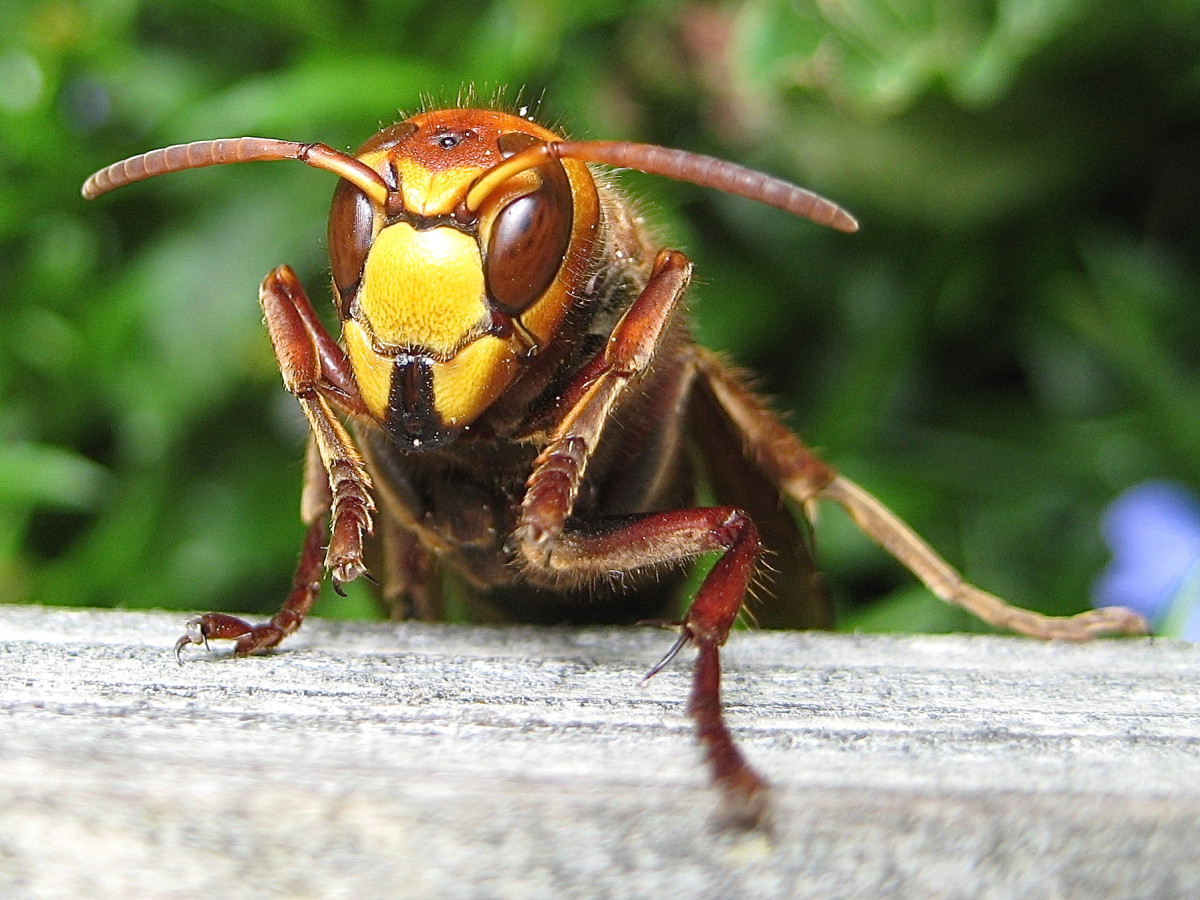
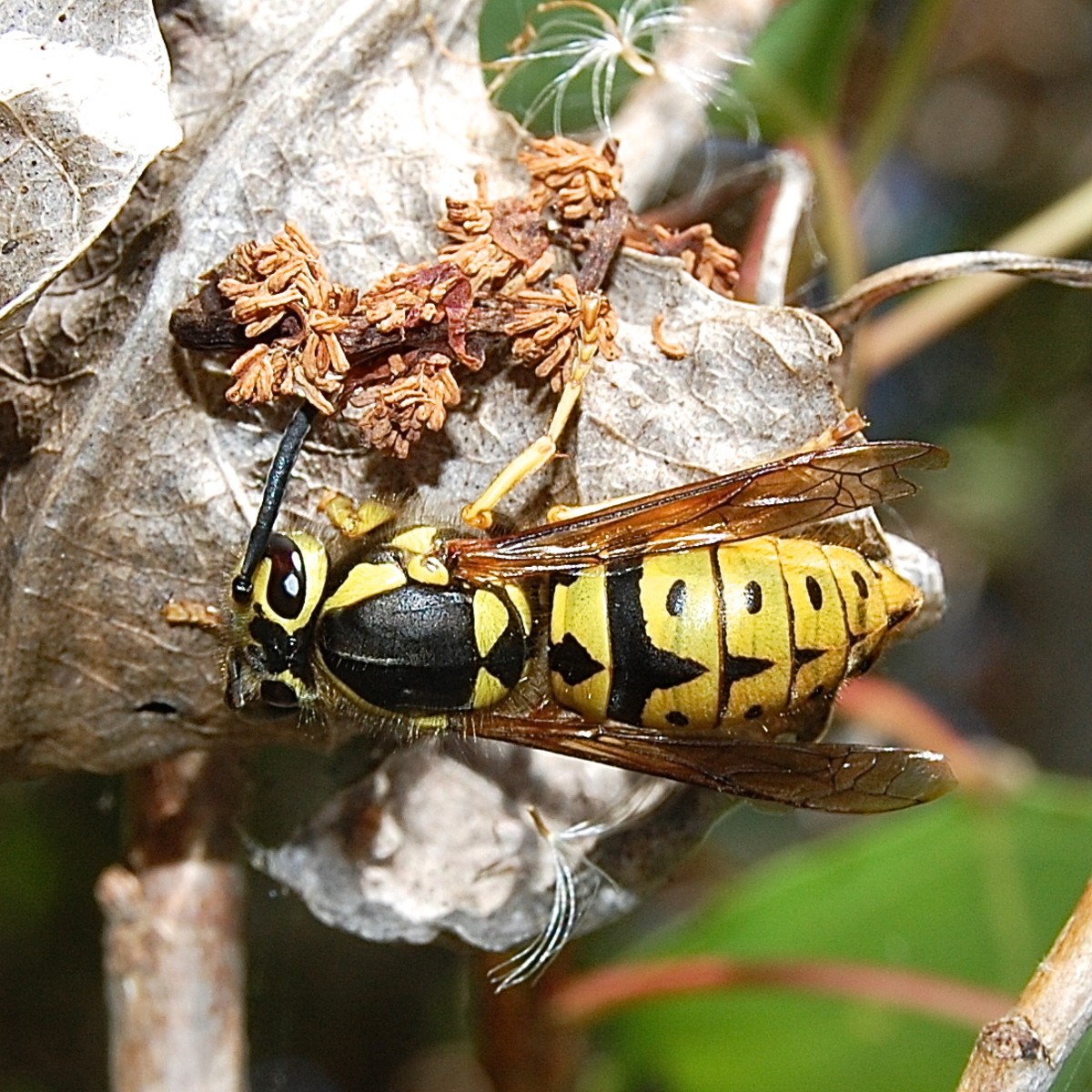
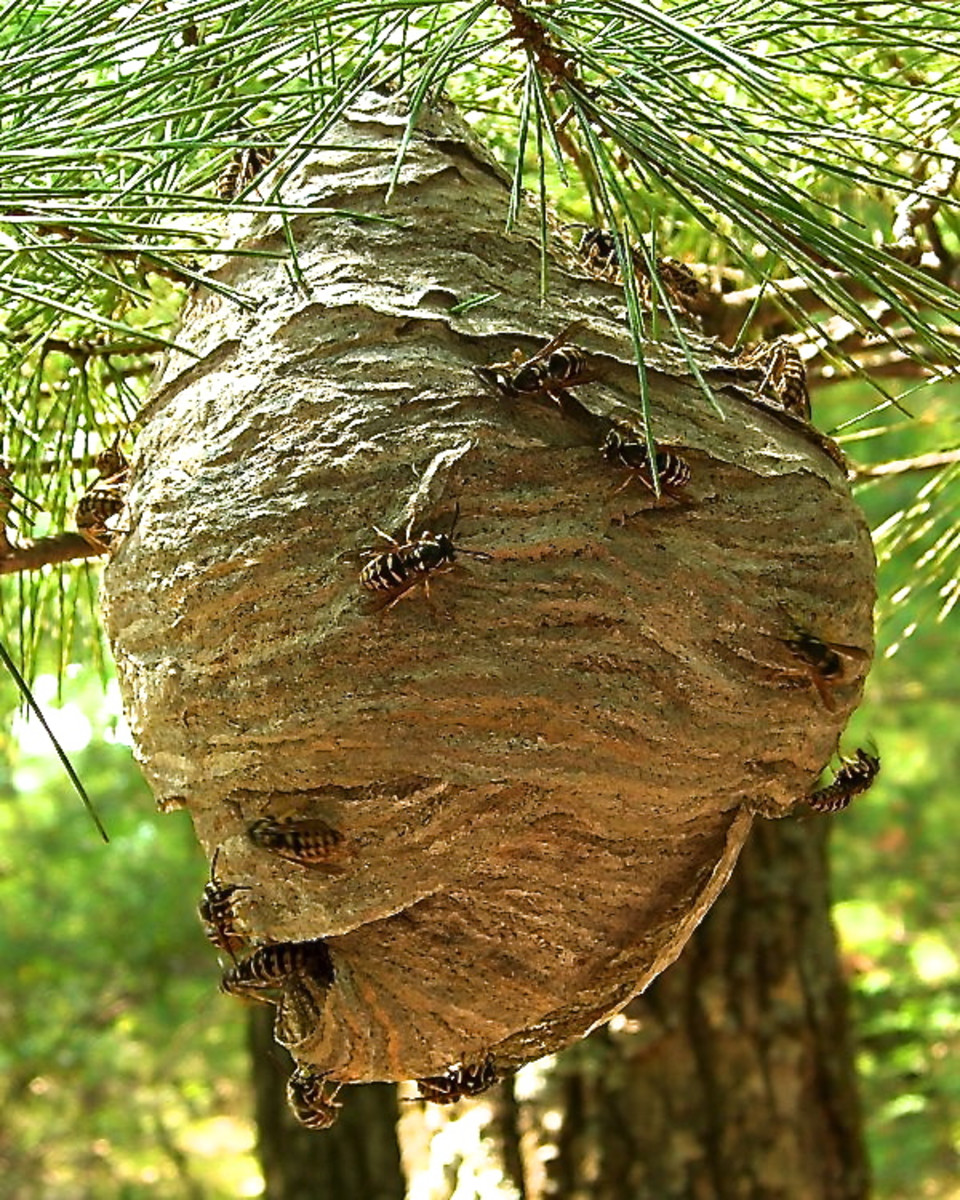
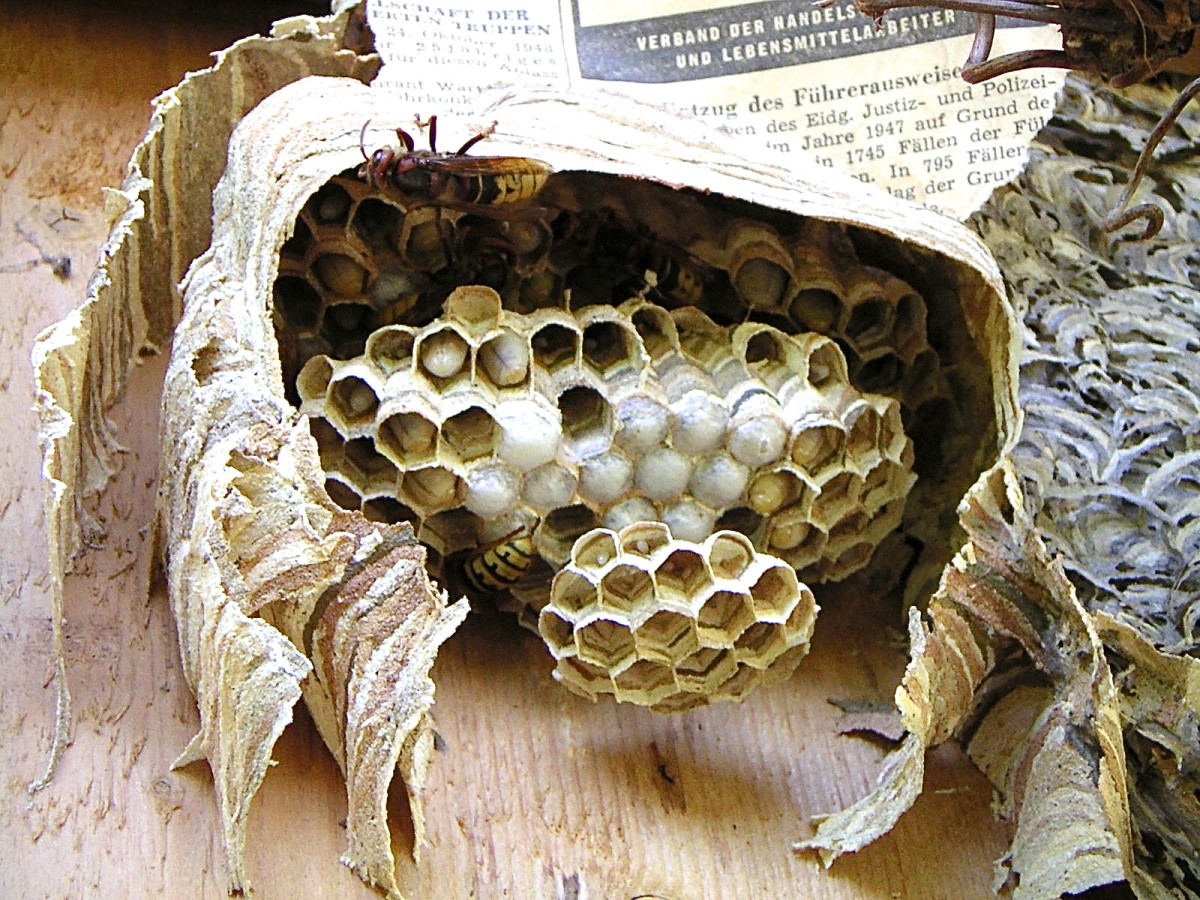
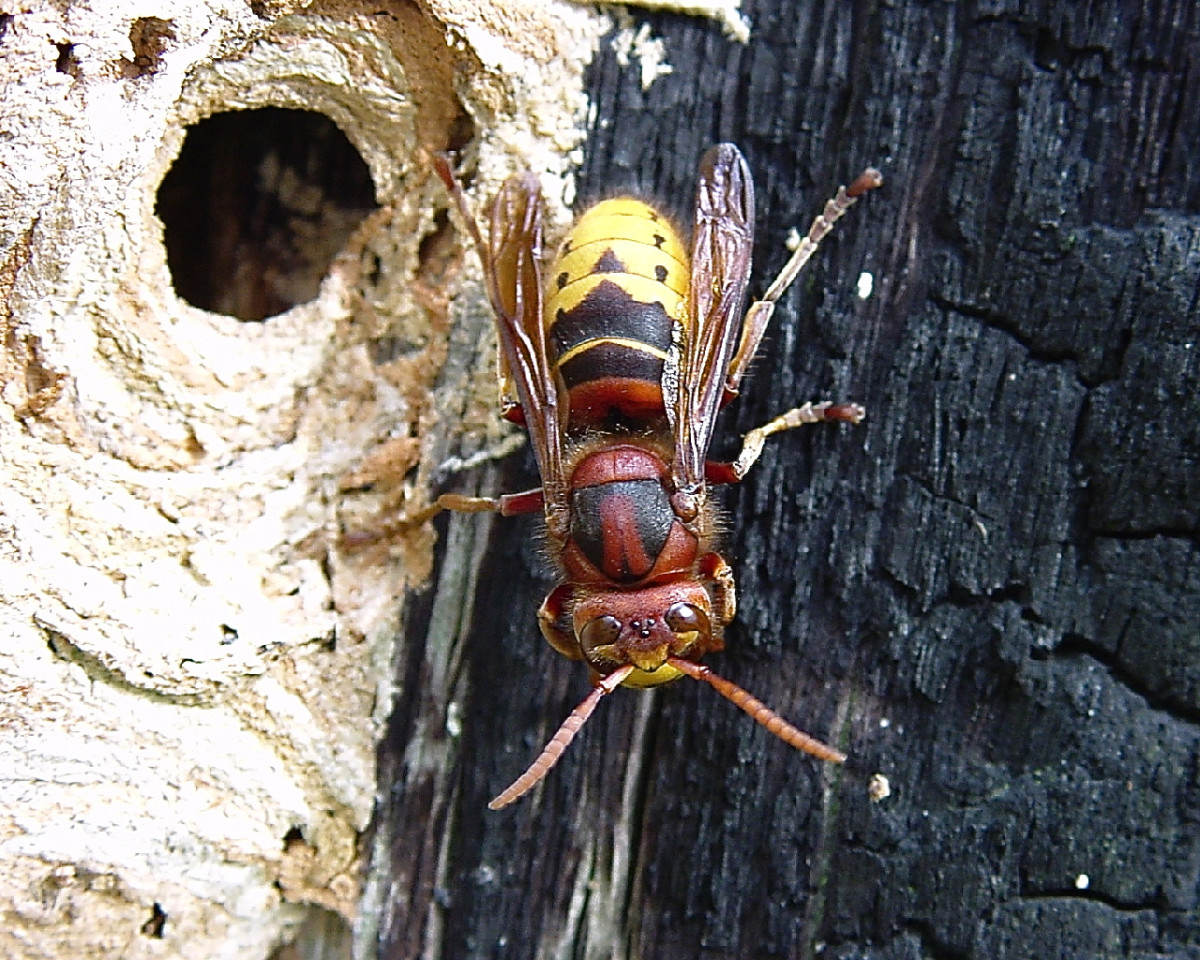
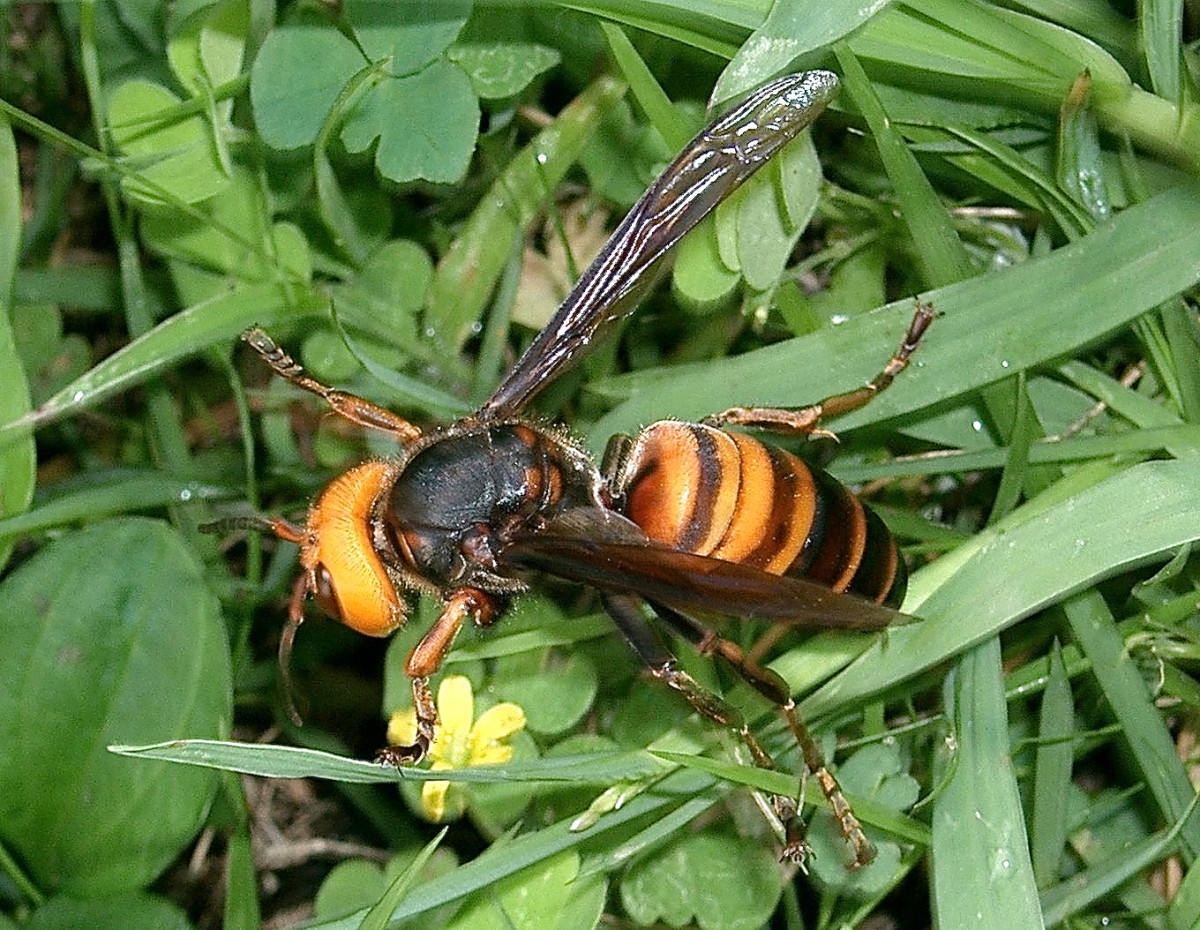
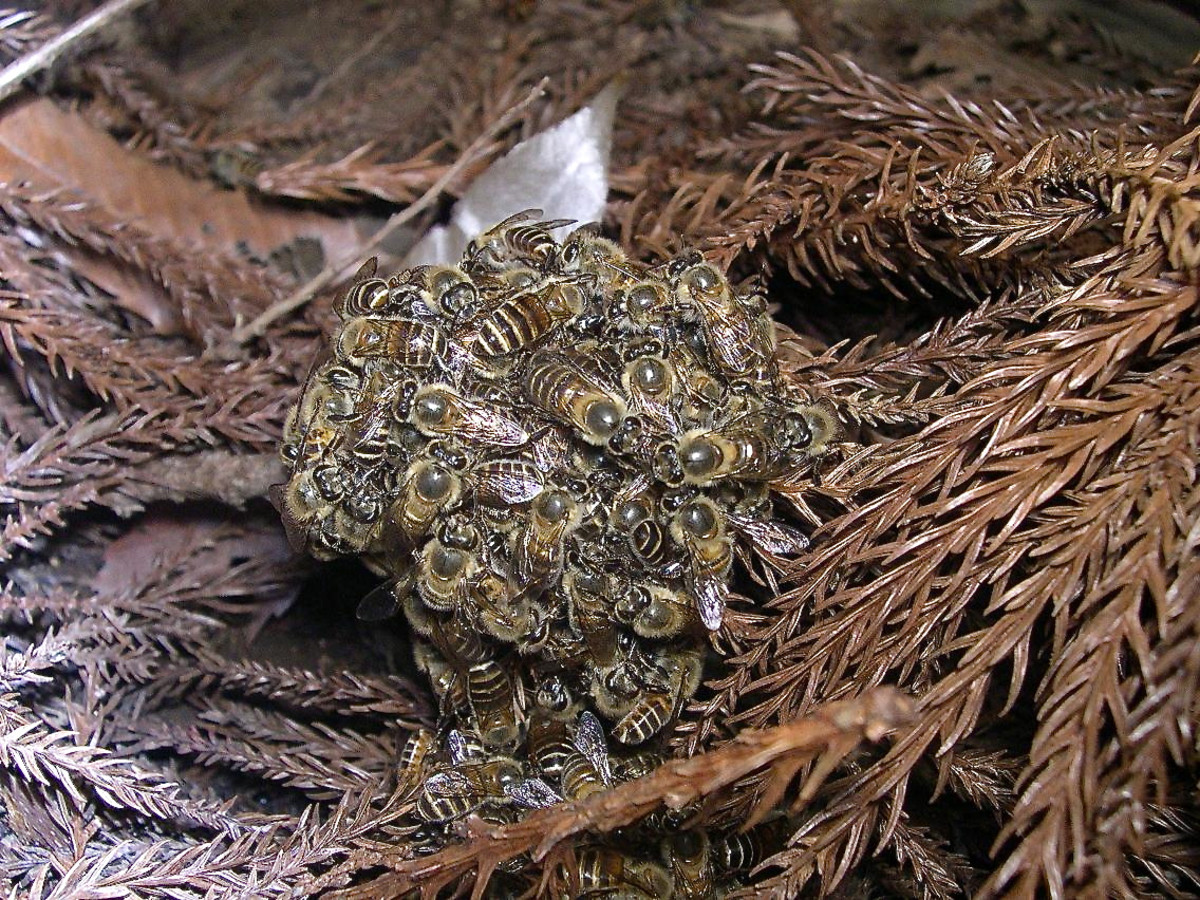
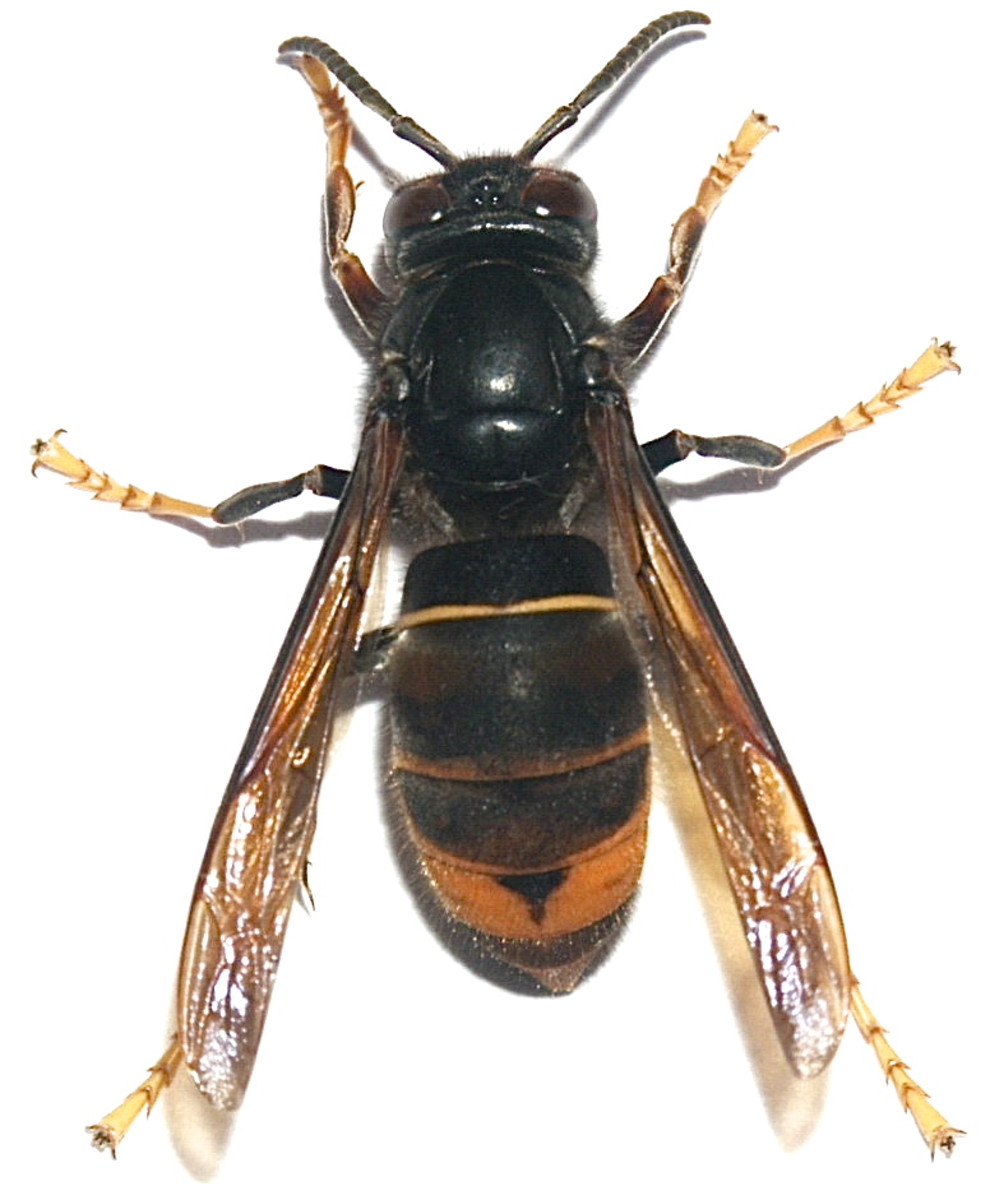
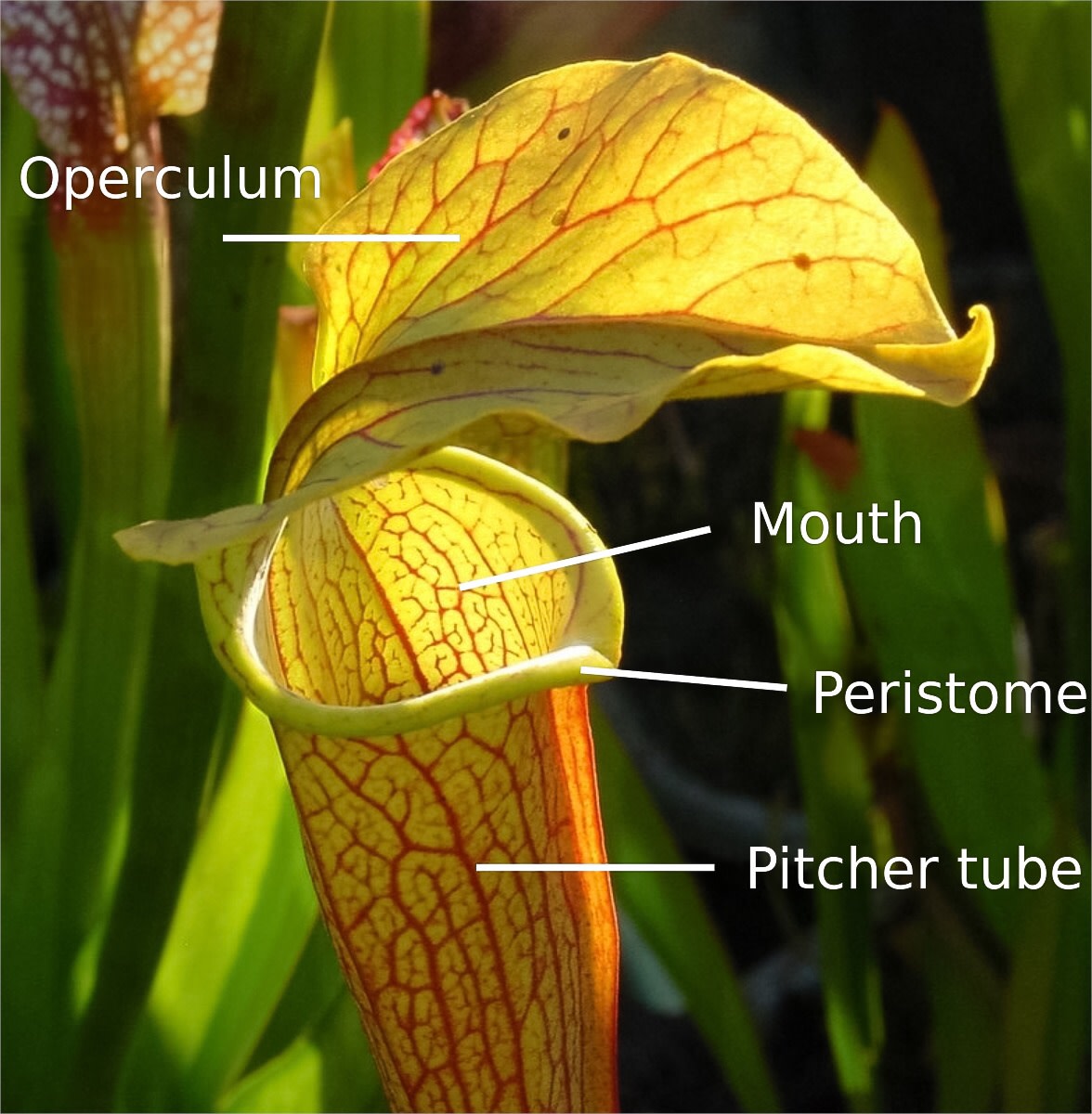
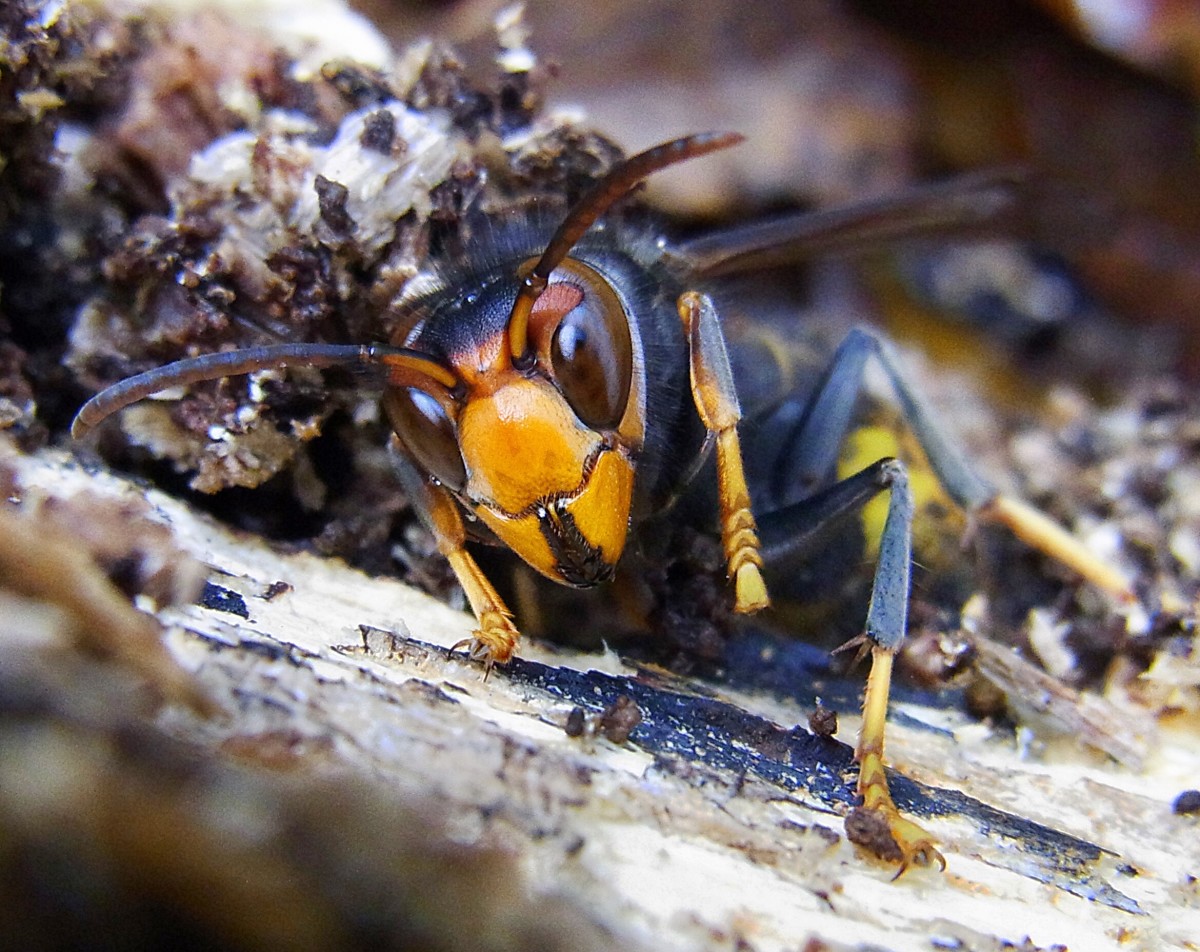 For further details log on website :
For further details log on website :
https://dengarden.com/pest-control/Interesting-Facts-About-Hornets-Large-Wasps-With-Paper-Nests
Linda Crampton
Linda Crampton is a science teacher with an honors degree in biology. She loves to study nature and write about animals and plants.

A European hornet | Source
What are Hornets?
Hornets are large and interesting wasps with complex behaviors. They are social insects and live in highly organized colonies. The colony builds an intricate nest from a papery substance made when the hornets chew wood and mix it with their saliva. The resulting structure is a wonderful feat of engineering and is both lightweight and strong.
Hornets eat plant matter and are also predators of other insects. They will sting humans if they're disturbed, but most are not aggressive at other times. While the sting of some species is no more dangerous than the sting of a common wasp, in other species the sting is very painful and may also be dangerous.
Hornets are widespread and are found in Asia, Europe, Africa and North America. At the moment, one species of hornet is creating a serious problem for humans. The Asian hornet or Asian predatory wasp is native to China but has colonized other countries as an invasive species. The species is of great concern since it kills bees. A group of Asian hornets can rapidly destroy a honeybee colony, sometimes within a few hours.

A western yellow jacket queen (Vespula pensylvanica) in North America: yellow jackets are a type of wasp but aren't hornets. | Source
What's the Difference Between a Hornet and a Wasp?
- A hornet is a type of wasp!
- The insect family called the Vespidae contains hornets, yellow jackets or yellowjackets (which are the most familiar type of wasp for many people), paper wasps, potter wasps and pollen wasps.
- Hornets aren't native to North America, but the European hornet has been introduced to the continent.
- The bald-faced hornet of North America is actually a type of yellow jacket, although it has black and white markings instead of the black and yellow markings of the common yellow jacket wasps.
- True hornets belong to the genus Vespa. (The genus is the first part of the scientific name for a living thing.)

A hornet nest | Source
Hornet Nests
Hornet nests are aerial and are found in treetops, under roofs or decks, in sheds or garages, in hollow tree trunks or in other areas that are raised off the ground. The nest is large and is shaped like a football. It contains horizontal combs, which hang in tiers and are connected to each other. Each comb contains many chambers or cells for eggs and larvae. The nest is often surrounded by layers of papery material that insulate the structure.
Some nests are free-hanging and have a stalk called a petiole which attaches the nest to an object such as a tree branch. Other nests are built in an enclosed space that provides support for the nest.
Some people like to collect hornet nests so that they can examine and admire their intricate structure, but it's very important to do this after all the hornets have left at the end of the season. Despite their larger size, most hornet species (but not all of them) are less aggressive than the common yellow jacket wasps, which are classified in the same family as hornets but in a different genus. However, all hornets will become aggressive if their nest is being attacked.

A hornet nest that has been broken open and partially rebuilt, showing the horizontal combs and the papery outer layers of the nest | Source
The Colony
The only member of the hornet colony that reproduces is the queen. Most hornets in the colony are workers. The worker hornets make the nest (after it has been started by the queen and the workers have developed from the eggs that she laid). Workers also feed the young and protect the colony from danger. The males mate with new queens and die soon afterwards. There are only a few males in a colony.
In temperate climates, a hornet nest is inhabited for only one year. The worker bees, the males and the season's queen die in the autumn. The new queens survive. They leave the nest and spend the winter hiding under loose tree bark, in the soil or even in a building.

Another European hornet | Source
The European Hornet (Vespa crabro)
In the spring, the new queens of the European hornet emerge from their winter hiding places and find a place to build a nest. They chew wood and mix it with saliva to form a light but strong construction material which is similar to paper mache.
The nest is generally built in an area that provides support for the nest instead of being free-hanging. Nests can be found in hollow cavities in tree trunks and in attics, barns and sheds. They may even be built in cavities in walls.
European Hornets Guarding Their Nest Entrance
The Queen, Larvae, Pupae and Workers
- The European hornet queen makes the first cells of the nest and lays a fertilized egg in each one. After about five to eight days, the eggs hatch into young forms of hornet known as larvae or grubs.
- The queen feeds the larvae a paste made of her saliva and insects that she has chewed. She also continues to make new cells and to lay eggs.
- At about two weeks of age, each larva makes a silk cap to fit over the top of its cell. Inside the sealed cell the larva turns into a pupa.
- Inside the pupa, the young hornet changes into an adult worker bee. The worker then emerges from its cell and takes over the jobs of building the nest and feeding the larvae.
- The larvae release a sweet secretion which the workers eat. The secretion contains amino acids as well as sugars. It provides the workers with energy and encourages them to keep feeding the grubs.
- Once enough workers have emerged from the pupae, the queen's sole job is to lay eggs.
- European hornets fly during the night as well as during the day to collect food.
- The workers sometimes damage trees because they strip the bark to get to the sap. They can also damage fruit crops. However, they may help humans by killing harmful insects.
European Hornets Feeding on Tree Sap in North America
The Drones and New Queens
- In late summer males (or drones) are produced from unfertilized eggs.
- In the fall new queens develop from fertilized eggs.
- The new queens leave the colony and mate with males from other colonies.
- The queens store the sperm in their bodies until it's needed to fertilize eggs in the spring. They find a place to hide and become dormant over the winter. When the sperm starts to become active in the spring, fertlization begins. The queen is able to produce a new colony from the stored sperm.

Japanese Giant Hornet | Source

Japanese honeybees in a ball around two hornets: the ball heats and kills the hornets | Source
The Asian Giant Hornet (Vespa mandarinia)
The largest hornet in the world is the Asian giant hornet, or Vespa mandarinia. It has a body length of about two inches, a wingspan of about three inches and a stinger that is about a quarter of an inch long. The Japanese giant hornet is a subspecies of the Asian giant hornet and has the scientific name Vespa mandarinia japonica.
Native bees in Japan have developed a fascinating way to defend themselves against the much larger hornets. When a hornet scout finds a honeybee colony, it releases communication chemicals called attack pheromones. If the scout returns to its own colony, the pheromones will attract the other hornets and trigger their attack on the bees.
The honeybees can detect the pheromones released by the hornet scout. They allow the hornet to approach and lure it into their hive. The bees then surround and cover the unfortunate hornet, forming a "bee ball".
The honeybees in the bee ball vibrate their wing muscles rapidly, raising the temperature around the hornet to as high as 115°F (46°C). The crowd of bees also releases a large amount of carbon dioxide. The combination of high temperature and high carbon dioxide concentration kills the scout, preventing it from communicating with its colony. Bees introduced to Japan from another country (such as European honeybees) haven't developed the overheating behavior and are often slaughtered by attacking hornets.
Honeybees Kill a Japanese Giant Hornet Scout
Asian Giant Hornets and Humans
The sting of the Asian giant hornet is very painful for humans and is potentially dangerous. The venom is powerful and contains chemicals that can destroy human tissue and interfere with nerve action. A significant number of Japanese people die from giant hornet stings every year.
Some people in Japan like to eat giant hornets in either a raw or fried form. The secretion produced by the larvae to attract workers is known as vespa amino acid mixture, or VAAM. It gives the workers energy and is the basis of a Japanese sports drink, which contains synthetic chemicals similar to those in the larval secretion.

The Asian Hornet or Vespa velutina | Source
The Asian Hornet (Vespa velutina)
The Asian hornet is sometimes called the Asian predatory wasp or the yellow-legged hornet. It's not the same insect as the Asian giant hornet. The common names of hornets can be confusing, so it's always a good idea to check the scientific name when reading or hearing about the insects.
The Asian hornet can be recognized by its generally dark body, the orange coloration on the rear half of its abdomen, the yellow or orange bands on the abdomen, the orange face and the yellow legs. The insect is believed to have entered France in a shipment of Chinese pottery in 2004 and has spread to other European countries.
In France, the Asian hornet builds its nests in tall trees, under decks, in sheds or in garages. The hornet attacks bees to provide food for its larvae. The chewed bees provide a protein-rich meal for the grubs. The hornet rips a bee's body apart, removing the head, legs and wings. The thorax (the section in front of the abdomen that bears the wings and contains the wing muscles) makes a high-quality food.
The Asian Hornet or Asian Predatory Wasp
An Invasive Hornet
The Asian hornet is native to China but is now found in France, Belgium, Spain, Portugal and Italy. It has also been discovered in Japan and Korea. It hasn't arrived in Britain yet, but a plan of attack is ready in case it does.
The main concern about the insect is its threat to honeybees. Although Asian hornet venom isn't considered to be especially toxic to humans, because each hornet is large it releases more venom than many other stinging insects. Stings from multiple hornets have hospitalized people in France.

A species of Sarracenia, which is a type of pitcher plant | Source
Using Pitcher Plants to Catch Hornets
It has recently been discovered that a particular species of pitcher plant growing in the Nantes Botanical Garden in France traps Asian hornets. The plant doesn't catch European hornets, other wasps or bees. It belongs to the genus Sarracenia and is native to eastern North America.
Pitcher plants are carnivorous. They make food by photosynthesis like other plants, but they also trap and digest insects to obtain nitrogen. They often live in bogs, where the soil is generally low in nitogen.
Pitcher plants have long leaves that form a tube. There are nectaries on the lip of the tube. Like those in flowers, the nectaries on the leaves produce a sweet secretion that attracts insects. Pitcher plants may also release pheromones, which are chemicals that attract insects. When the insects land on the slippery rim of the tube, they fall into it. The plant then digests them with powerful secretions.
It has been suggested that pitcher plants could be used to destroy the Asian hornet. The plants might be helpful, as long they don't cause problems themselves. Realistically, though, a huge number of pitcher plants would be needed in order to control the hornet colonies. It's also been suggested that the pitcher plant chemicals that attract the hornets could be used in an artificial trap, which might work better. The problem is that we need to learn how to make the attractant chemicals synthetically.

The face of an Asian hornet or predatory wasp that was observed hiding under bark in France | Source
The Problem of Introduced Animals
Hornets are fascinating creatures. A study of the different hornet types and their lives reveals a common observation about life on Earth. An animal species that has inhabited an area for a long time has developed features that help it survive successfully in that environment. However, If the species is moved to a new environment and interacts with creatures that it's never encountered before - or if it doesn't encounter its usual predators - problems may develop.
Honeybee populations around the world are already in trouble due to a variety of stresses. Hopefully the spread of the Asian hornet through Europe can be stopped, removing one source of pressure for the local honeybees.
https://dengarden.com/pest-control/Interesting-Facts-About-Hornets-Large-Wasps-With-Paper-Nests





No comments:
Post a Comment